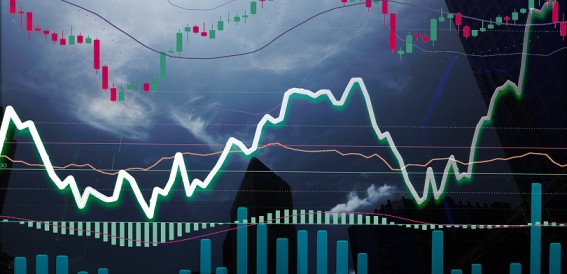In the Indian financial market, investors and analysts must understand the key differences between the Consumer Price Index (CPI) and the Producer Price Index (PPI). These two economic indicators, both widely used measures for tracking inflation, provide valuable insights into the overall health and stability of the Indian economy.
While the CPI focuses on changes in consumer retail prices, the Producer Price Index Ccaptures price variations at the producer level. By understanding the nuanced disparities between CPI and PPI in the Indian market, stakeholders can make informed decisions and navigate the complexities of the financial landscape effectively.
Topics Covered
- Difference Between CPI vs PPI
- Measurement
- Scope of Coverage
- What is Consumer Price Index?
- What is Producer Price Index?
- Where Do PPI and CPI Stand in Today’s Market?
- Conclusion
Difference Between CPI vs PPI
Methodology
CPI Methodology:
The calculation of the CPI employs a weighted average approach, which reflects the importance of different items in the expenditure patterns of households. The methodology involves collecting data on the prices of thousands of goods and services from various retail outlets, including supermarkets and shops.
These prices are then compared to a base period to measure changes over time. The weights assigned to different items in the CPI basket are derived from a comprehensive household expenditure survey, which captures the consumption patterns of diverse income groups.
PPI Methodology:
The PPI methodology also follows a weighted average approach, but unlike the CPI, it focuses on the prices at the producer level. The index tracks the prices of a selected basket of goods and services frequently utilised in production.
The Producer Price Index reflects both changes in the cost of raw materials and intermediate goods used by industries. The prices are collected from various sources, including manufacturers, wholesalers, and importers. These This data are is then used to measure average price changes for all goods produced in a specific industry or sector.
Must Read About: Demat Account Meaning?
Begin your investing journey today. Your Demat account is the first step.
Measurement
CPI Measurement:
The measurement of CPI involves collecting data on prices for a vast range of goods and services in various geographical areas. This includes items such as food, housing, healthcare, education, transportation, and clothing.
These prices are typically recorded every month and aggregated to provide an overall index figure. To ensure the accuracy and representativeness of the CPI, statistical agencies employ various techniques, including quality adjustments for product improvements and tracking changes in consumption patterns.
PPI Measurement:
To measure the PPI, statistical agencies gather data on the prices of various inputs across industries. These inputs can include raw materials, fuel, power, and intermediate goods.
Price data is collected through surveys, and care is taken to ensure that the goods chosen for analysis adequately represent the inputs used by producers.
Like with the CPI, the PPI also relies on monthly data collection and aggregation to provide an index that demonstrates changes in producer prices over time.
Scope of Coverage
CPI Coverage:
The CPI covers a broad range of goods and services typically consumed by households. It aims to reflect the spending patterns of the average consumer.
It, therefore, includes necessities like food, housing, healthcare, and discretionary items such as entertainment and recreation. The CPI represents inflation across income groups, with agencies ensuring it mirrors the cost of living changes for diverse population segments.
PPI Coverage:
In contrast to the CPI, they it focuses primarily on the prices at the producer level. It covers the prices of inputs and intermediate goods used in production. This encompasses various industries, including agriculture, manufacturing, construction, and services.
It provides valuable insights into the cost pressures faced by different sectors of the economy and can be used to assess changes in input costs that may impact the final prices of goods and services.
What is Consumer Price Index?
The Consumer Price Index (CPI) serves as a pivotal metric that delves into the variations in the prices of a specific set of goods and services purchased by households within a country. These goods and services, collated into a ‘basket’, encompass everyday items from food and clothing to entertainment and healthcare. This basket’s composition mirrors the populace’s average consumption patterns, ensuring that the CPI is representative of the general consumer experience.
Economists, policymakers, and business leaders heavily rely on the CPI. Its importance is underscored by its role in gauging inflation, a critical economic indicator. Inflation, the rate at which the general level of prices for goods and services rises, erodes purchasing power. By tracking changes in CPI, stakeholders can glean insights into inflationary trends, facilitating informed decision-making. For instance, central banks might adjust interest rates based on inflation insights from the CPI, aiming to strike a balance between economic growth and price stability.
What is Producer Price Index?
The Producer Price Index is a crucial metric that captures the average change in selling prices received by domestic producers for their output over time. Unlike the CPI, which focuses on the consumer’s perspective, It PPI offers a perspective from the producers’ side, shedding light on the costs they bear for raw materials and services.
Financial analysts, industry experts, and policymakers often use Producer Price Index as a trusted barometer. Its primary significance lies in its ability to offer early insights into inflationary pressures. Before consumers feel the pinch of rising costs, producers usually witness fluctuations in the prices of raw materials. Thus, the PPI often serves as an early warning system for inflation, enabling decision-makers to anticipate and respond to economic shifts.
By evaluating the prices at different stages of production – from raw materials to intermediate goods and finished products – they it provides a comprehensive view of the production process’s cost dynamics. Data for the PPI is collated through extensive surveys of producers and businesses and through analysis of market trends and transaction records.
Where Do PPI and CPI Stand in Today’s Market?
In today’s Indian financial market, both the Producer Price Index and the Consumer Price Index (CPI) hold paramount importance as pivotal indicators of economic health.
The CPI, which gauges the average change in prices of household goods and services, remains a primary metric for measuring inflation. Its fluctuations directly impact the Reserve Bank of India’s monetary policy decisions, particularly in setting interest rates to manage inflationary pressures.
On the other hand, they the index representing the price changes from the perspective of producers, provides early insights into potential cost-push inflation. An uptick in the PPI often signals that producers face increased input costs, which may eventually be passed on to consumers.
Conclusion
With the Indian economy witnessing dynamic shifts due to global trade tensions, technological advancements, or the aftermath of the COVID-19 pandemic, the interplay between Producer Price Index and CPI becomes even more crucial. Together, they offer a comprehensive view of the inflationary landscape, guiding policymakers, businesses, and investors in navigating the complexities of the financial market.
Start investing smarter today by opening demat account online and take charge of your financial future.
Abstract: Unraveling Inflation: Discover the Difference Between CPI and PPI in India’s Economy. Learn how these indicators shape financial decisions and economic strategies.











